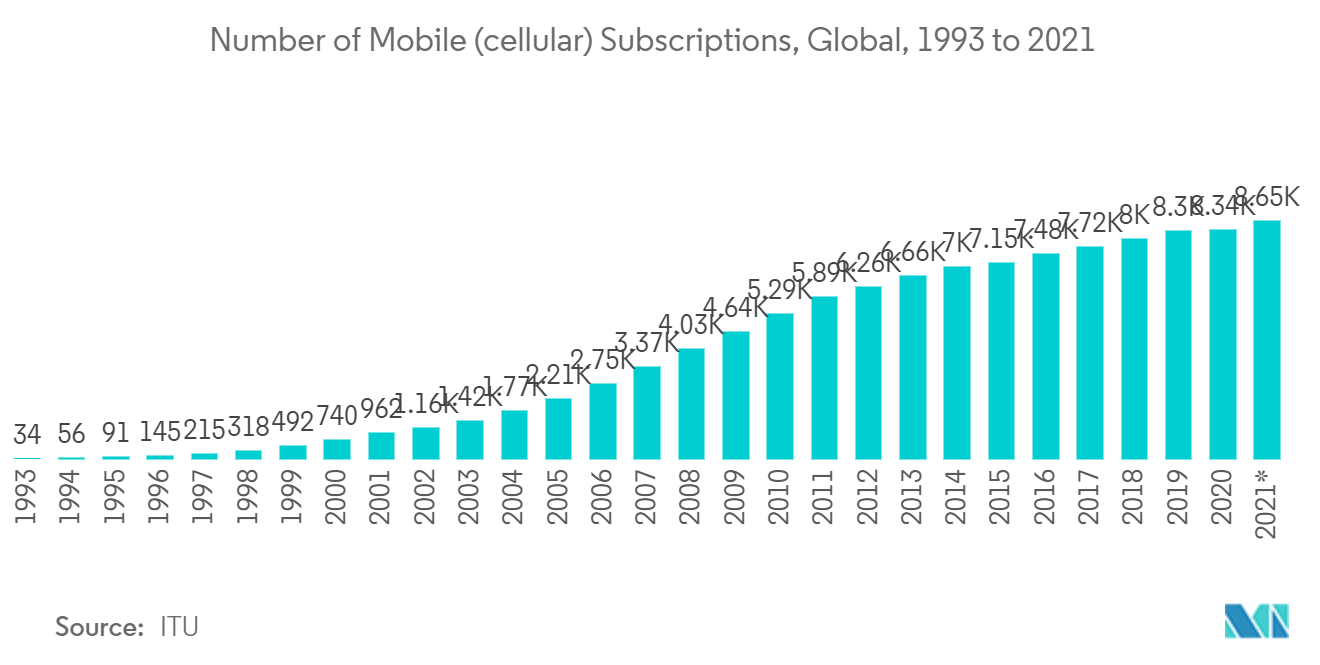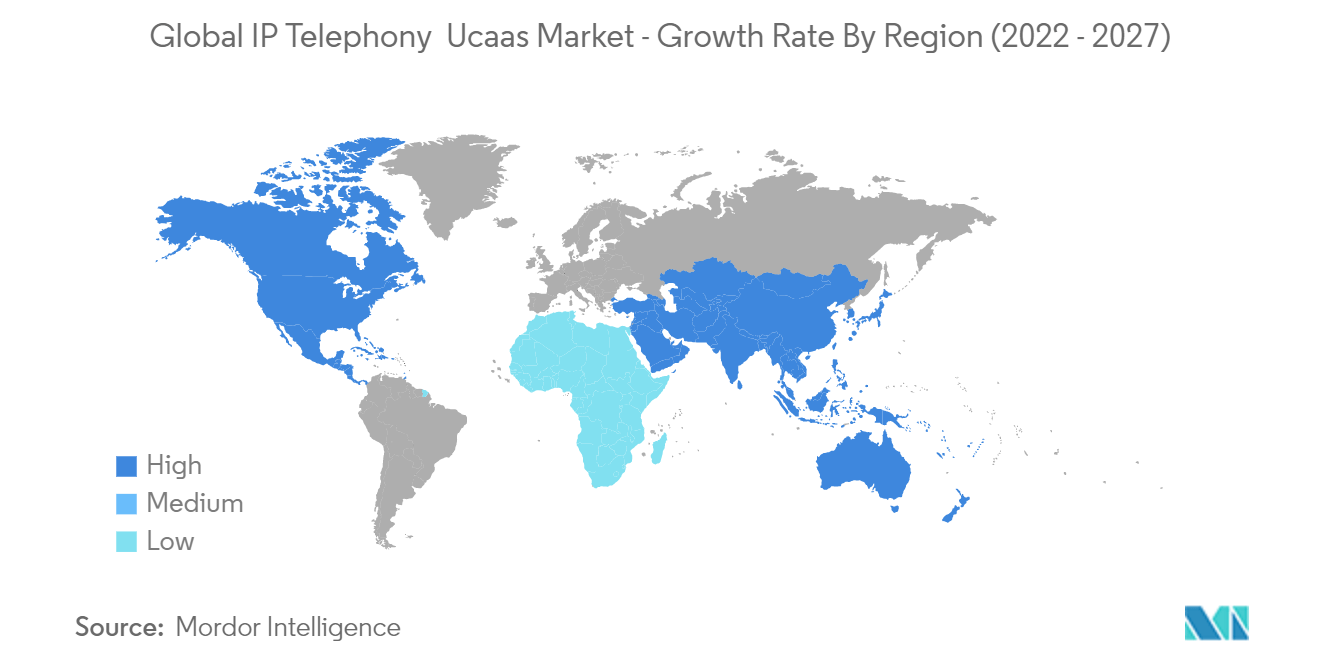Market Trends of Global IP Telephony & Ucaas Industry
The BFSI Segment is Expected to Drive the Market Growth
- Unified Communications as a Service (UCaaS) emerged as a cost-effective solution for the BFSI sector. Banks and financial sectors primarily invest in UCaaS to better understand customer communications across all channels to attain the scalability required for large-scale implementation.
- UCaaS services help increase availability and scalability while enhancing collaboration. UCaaS solutions allow enterprises to focus on the growth of their business rather than their maintenance. Businesses need not pay for UC software with features that they will never use, thereby saving money. UCaaS services broadly incorporate interactive voice response (IVR), video conferencing, live chat, e-mails, unified messaging, VoIP services, and other client management capabilities.
- Moreover, BFSI companies require extensive collaboration across a range of departments. For this, wealth and finance managers need to speak to analysts while customer support staff collaborate across time zones. This effective collaboration requires software solutions that eliminate friction.
- For instance, UCaaS allows diverse teams to coordinate and collaborate seamlessly. However, UCaaS operates in the cloud, and team members can access information on any device at any location. Call center supervisors can monitor progress on a smartphone in real-time. Financial research analysts can analyze data without ever being in the same room. UCaaS helps financial services companies get the most out of their human capital.
- Enterprises are searching for ways that cut down on expenses and have the potential to generate internal revenues. Making essential files and data accessible through the cloud was a feasible solution, which led to the proliferation of the BYOD (Bring Your Own Device) trend. Banks and financial institutions are quickly following suit, and given the globalized nature of their business, remote access to data becomes an essential feature for this industry.

North America is Expected to Register the Fastest Growth
- The country's supremacy may be ascribed to the recent surge in mobility and explosion of 5G connection due to the consumerization of IT, which has aided enterprises in adopting IP telephony and UCaaS to allow remote employees to simulate in-office work experiences.
- In the US, end-users such as retail, banking and finance, healthcare, information technology, and telecommunications seek a more direct and seamless experience for all oftheir communications-audio, video, and chat-no matter where they are. To fulfill this need, enterprises are looking for a unified deployment and management solution from a single vendor they can rely on to handle their UCC requirements. They'll be able to integrate remote connectivity tools on a single UCaaS platform with the advent of 5G.
- 5G will be advantageous to consumers, but it will also be beneficial and precious to enterprises that rely on Unified Communications. The internet's speed will alter as a result of 5G. The current average pace of 1GB per second will be increased to approximately 20GB per second. The VoIP industry will develop as bandwidth capacity and speed rise. The combination of 5G and VoIP will provide consumers with the equivalent of a fiber-optic broadband connection.
- This will ensure that VoIP can be used on a massive scale. Companies with worldwide operations will benefit from VoIP combined with 5G since communication costs would be reduced.
- As a result of the rise of 5G and edge networking, vendors could expect exciting changes in the real-time communication market. UCaaS provides a place for endless creative services and a collection of managed services tools that may help suppliers maximize revenue generation in the near years due to improved security, simpler provisioning, and a set of managed services tools.
- The United States is one of the foremost innovators and investors in the 5G market due to increasing investment for 5G deployment. The telecom industry in the country accounts for a significant portion of the global consumption of 5G technology.


